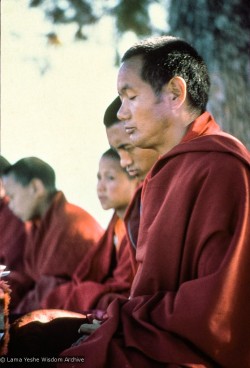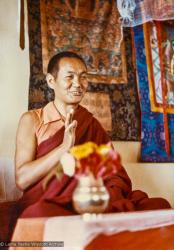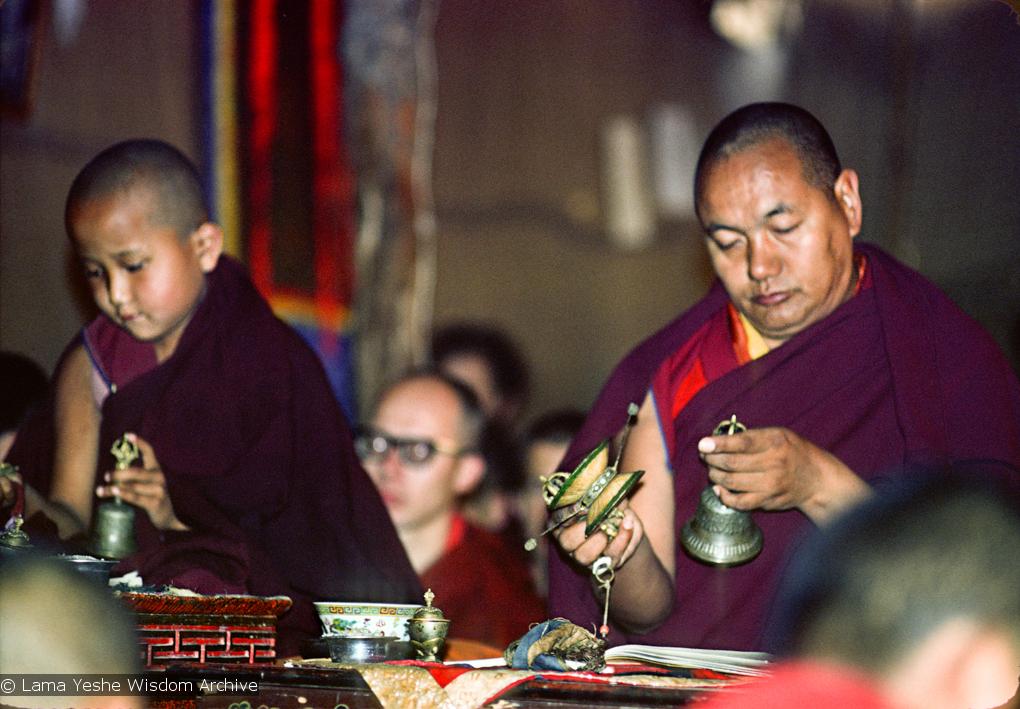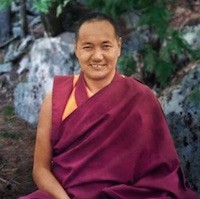
The experience of totality opens you psychologically and gives you space to develop your great potential.
Otherwise, you’re suffocated by the heavy smog of duality; squeezed; oppressed. Your great potential is obstructed.
Therefore, this experience is important. But it is very different from the philosophy. When we talk about emptiness philosophically, there’s no such thing as the relative world disappearing. You don’t say that your nose has disappeared; it’s still there. If someone asks you if your nose is non-existent, you can’t say yes. Your nose exists. If you say your nose is non-existent people will freak out. They’ll think you’re a crazy nihilist; that you don’t accept reality.

When we talk philosophically, we accept all phenomena in the bubble of relativity. We don’t deny the existence of our noses or other existent things. They have a cause; they have an effect; and they all manifest from the space of non-duality, as we’ve been talking about. They come and they go. Because of non-duality they can move freely, grow freely and disappear freely. It’s natural. This is the law of the universe. It’s not my law; it’s not some Himalayan law.
The law of the universe is scientific reality, not some kind of made up fantasy, and it is extremely important that you discover it for yourself.
When you do, you will understand how the dark shadow of ignorance keeps the pitiful mother sentient beings in confusion; how sentient beings are suffering because they have not discovered the clean, clear, pure energy of universal reality. This is what they lack. Buddhism strongly emphasizes that universal non-duality is like cheesecake, or chocolate; we always assert that non-duality is the best phenomenon in the world.
All Lord Buddha’s sutras indicate that non-duality is the heart essence of every phenomenon in the universe. It is incredibly valuable, the diamond of all existence.
This is explained over and over again. It is such an important point. That’s why throughout the entire canon of his teachings, Lord Buddha says again and again, “Sometimes I advise people to do this; sometimes I recommend that. I tell people all kinds of things. But the sole purpose of every syllable, every letter, of every method I teach is to lead them to discover the reality of the universe, Shunyata.”
Everything Lord Buddha said, every single movement he made was, in essence, a method of leading other sentient beings to discover universal reality.

These days, in the West, we hear a lot about the open heart, about opening your heart. This is common.
From the Buddhist point of view, in order to open your heart, you have to realize something. “I want to open my heart, but how?”—this is the question.
Opening has to do with realization; no realization, nothing opens. It doesn’t matter that you say, emotionally, “I’m open. I love you; you love me so much.” That doesn’t mean you’re open. We do that kind of thing, don’t we? “No matter how much I open myself up to you, you never open yourself up to me.” It’s a joke. It’s not true.
Well, perhaps it’s true in one sense, but actually, true openness implies space—your consciousness embracing some kind of wide totality. This experience of embracing totality itself becomes the solution, or antidote, to the narrow, fanatical, conceptualizing dualistic mind.
But then there’s the danger of the attitude, “Wow! Universal reality is incredibly special,” arising. We get the impression that Shunyata is a really special, fantastic phenomenon. This attitude is wrong. Instead of, “Oh, non-duality is special, up there; the ordinary, relative bubble of samsara is down here,” which is completely wrong, our position should be more realistic: whenever there’s the appearance of the bubble of relativity, we should simultaneously see non-duality within it.
When we’re in a conducive environment, we find meditation easier; because we’re free of the vibration of the conflict of duality. When we’re out and about, in contact with the objects of the bubble of relativity, our hearts immediately begin to shake; sense objects make uncontrolled energy run rampant within us. Because we don’t see the non-duality of universal reality within the bubble of relativity, our reactions to objects in the sense world are fragmented.
If we could see reality, we wouldn’t shake every time there was a change in our external environment.

Why, when the environment changes, does your behavior change immediately as well?
You know, I like talking about this. For me, this is much more realistic than talking philosophy. So, why do we change like that? Well, look at what happens to you here. As soon as you leave the meditation hall and go into the dining room, you manifest as something else completely. You’re almost another person. Why?
Because you differentiate between deepest, essential nature of the meditation hall and that of the dining room. If you could see universal reality of these two rooms—and essential reality is non-differentiated; it has a unified quality—you would not change so easily.
You see, we are completely intoxicated by the dualistic mind; the dualistic mind completely overwhelms us. The vibration of each different environment too easily influences us. We think we’re in control; we’re not in control.
When I look at a lovely flower, I’m too influenced. I’m intoxicated by it. When I look at something else, that, too, intoxicates me. I’m completely dominated by my dualistic mind; I have no control. I’m completely influenced by the external world and from my own side, am totally helpless.
We’re all the same—we’re constantly under the influence of whatever we see and hear outside. It’s incredible. The dualistic, relative mind intoxicates us, while our wisdom realizing universal reality is in a deep sleep. Now is the time to reveal and activate that wisdom.
This teaching is an excerpt from a Commentary on the Yoga Method of Divine Wisdom Manjushri, given at Manjushri Institute, Cumbria, England, August 3, 1977. Edited by Nicholas Ribush. Read more of this teaching from Lama Yeshe at Lama Yeshe Wisdom Archive.
Relephant Read:
Non-Duality to Address Contemporary Human Predicament.
Author: Lama Yeshe
Editor: Catherine Monkman
Images: 1 by Anila Ann, 3 by Connie Miller. Also see more about Image 2 and Image 4.

 Share on bsky
Share on bsky




Read 1 comment and reply